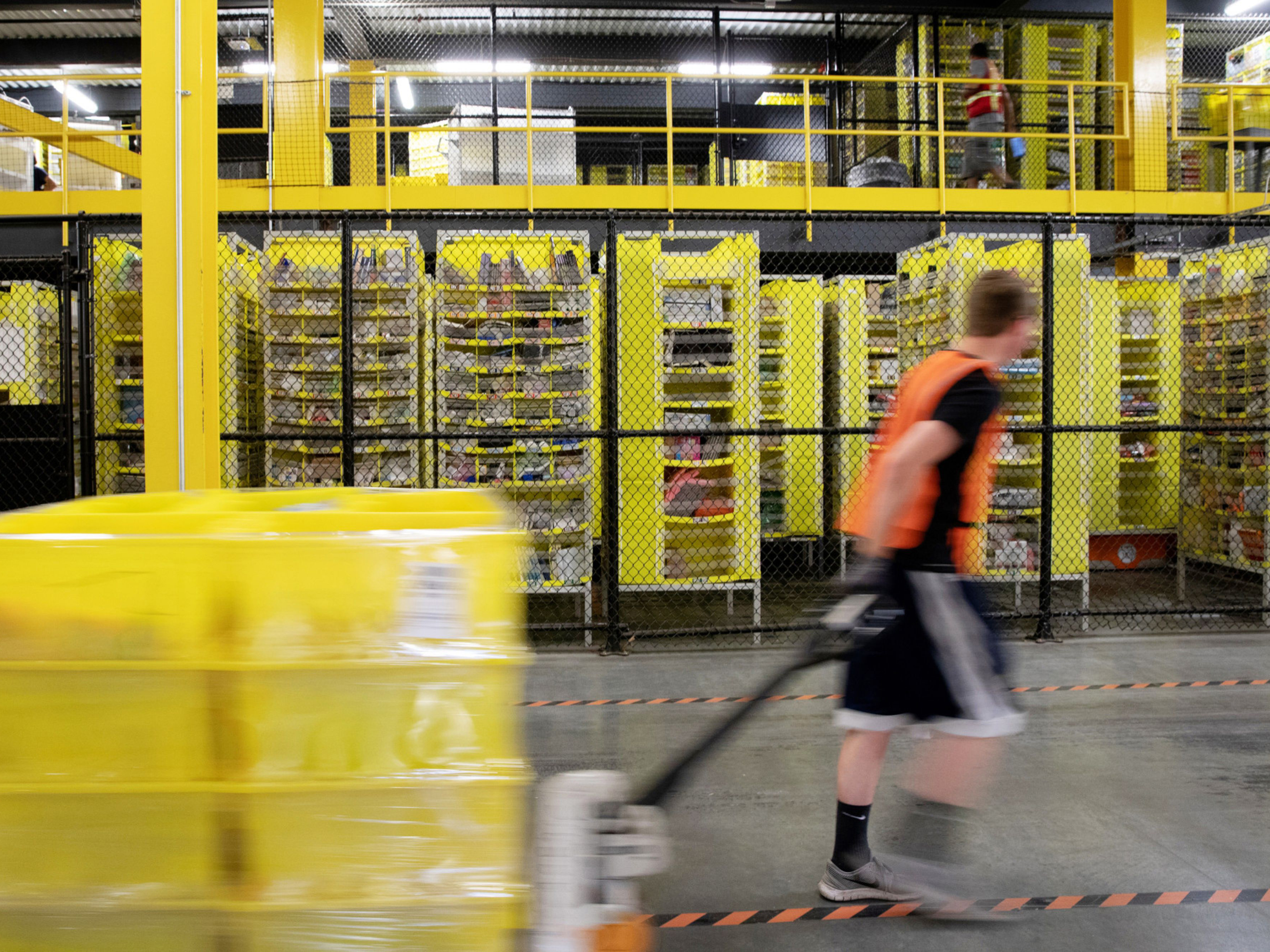
The past decade has seen substantial changes in the supply chain. Whether it’s the evolution of the distribution center to accommodate e-commerce, or the push of e-commerce fulfillment operations closer to population centers, the one constant has been labor challenges. In the growing supply-chain industry, labor demand outpaces the labor pool by a six-to-one ratio. According to a 2018 study by Deloitte, this gap could leave an estimated 2.4 million positions unfilled through 2028.
Yet most D.C. operations are behind in their journey to automation. Manual operation is still the norm for approximately 80% of D.C.s today. It’s a model that is quickly becoming unsustainable, as e-commerce fulfillment becomes increasingly complex and fast-paced. Online shopping sales are increasing at a rate of around 25% annually, pushing fulfillment and distribution operations to their limits.
With more jobs available than job seekers, it’s no wonder that more facilities are turning to smarter, more versatile automation solutions. This can present its own set of challenges, however, as most supply-chain jobs require skills that only about 30% of the workforce currently possesses. Many are repetitive and dangerous, resulting in high turnover, low morale and a need to constantly retrain workers, all at a steep cost.
Robotics offer the tremendous potential to address these labor and productivity growth challenges. While robotics automation appeals to the supply-chain industry, many questions remain. Can robots withstand the chaotic environments of fulfillment operations? How can they integrate with employees and existing automated systems? Which workflows can they support? The answers largely depend on the unique needs of each operation. However, robots are becoming increasingly able to tackle the real-world challenges of D.C.s and augment available human labor, and at reasonable costs.
Getting Started With Automation
To address today’s labor shortage, D.C.s need to adopt a multifaceted approach to identifying their unique challenges and needs. A successful robotics system requires careful coordination among a variety of moving parts within a fulfillment operation, from conveyors to picking technologies, and smart software should tie them all together. Automating previously manual tasks comes not from a single innovation, but rather through a variety of technologies in one integrated package.
Not every distribution operation requires the same level of support when it comes to automation; there’s no one-size-fits-all model. With a wide variety of options to choose from, selecting the right first step toward adopting robotics can be an overwhelming task.
For example, mobile robots are now able to handle unloading tasks more efficiently than ever before. Fully automated unloading solutions for delivery trucks and shipping containers have been introduced in recent years, which can relieve major manual labor demands. Similarly, robotic sorter induction technologies can replace or supplement manual induction, maximizing throughput and freeing workers from monotonous, physically demanding tasks.
Operators should carefully evaluate their unique needs to identify the best solutions. Working with a partner with robust industry knowledge and a Robotics Industries Association certification can help companies find the solutions that maximize benefits across the supply chain.
Additionally, operations should consider simulation tools when evaluating robotic solutions. Physics-based simulation tools allow them to be tested in virtual environments, using the same control logic they’ll use in the real world. With a wide variety of product shapes, sizes and weights, simulations can show how robotics solutions perform under individual product scenarios prior to deploying in the real world. These powerful tools can identify where robots will be most effective, without relying on trial and error. This gives end users confidence that the solution will perform as expected, and yield the necessary returns to justify the solution.
Minding the Gap
Once the best solutions have been identified, fulfillment operations must focus on bridging the gap between robots and human workers. The average D.C. worker might find it difficult to keep pace with today’s expectations for speed of delivery without the added support of robots. Although automation is key to staying competitive, D.C.s must recognize that manual labor continues to become harder to find and retain.
We’re finding that 60% of supply-chain jobs require skills that only 20% of the workforce possess. And if workers can be found, many jobs are repetitive and even dangerous. The result is low morale, high turnover, retraining and associated costs.
Fortunately, solutions like virtual-reality training, augmented-reality maintenance assistance and voice solutions are available to address the operational as well as technical skills gaps. By supplementing robotics with technology that supports the workforce transition, D.C.s can prevent costly turnover, and ensure that the skill and technology gap that comes with any automation transition is addressed.
Looking Ahead
The growing labor gap is one of the most pressing issues in today’s supply-chain industry. Automation is now essential to staying competitive, and robots are important partners in supporting the workforce transition to free up labor for higher-value work.
Automation is necessary to keep up with the demands of today’s fast-paced, e-commerce-driven economy. Companies’ inability to stay competitive, not robots, is the biggest threat to American jobs. By strategically investing in robotics and labor solutions to bridge the operational and technical skills gap, D.C.s can be sure they’re ready to keep pace with current and future changes to the workforce.
Matt Wicks is chief robotics solution architect at Honeywell Intelligrated, and chair of the Robotics Industry Association Board of Directors.







